Introduction
How Does a Wind Turbine Generate Electricity?: A Green Energy Source
Wind turbines stand as towering beacons of renewable energy. This section will dive into these structures and their significance in today’s world.
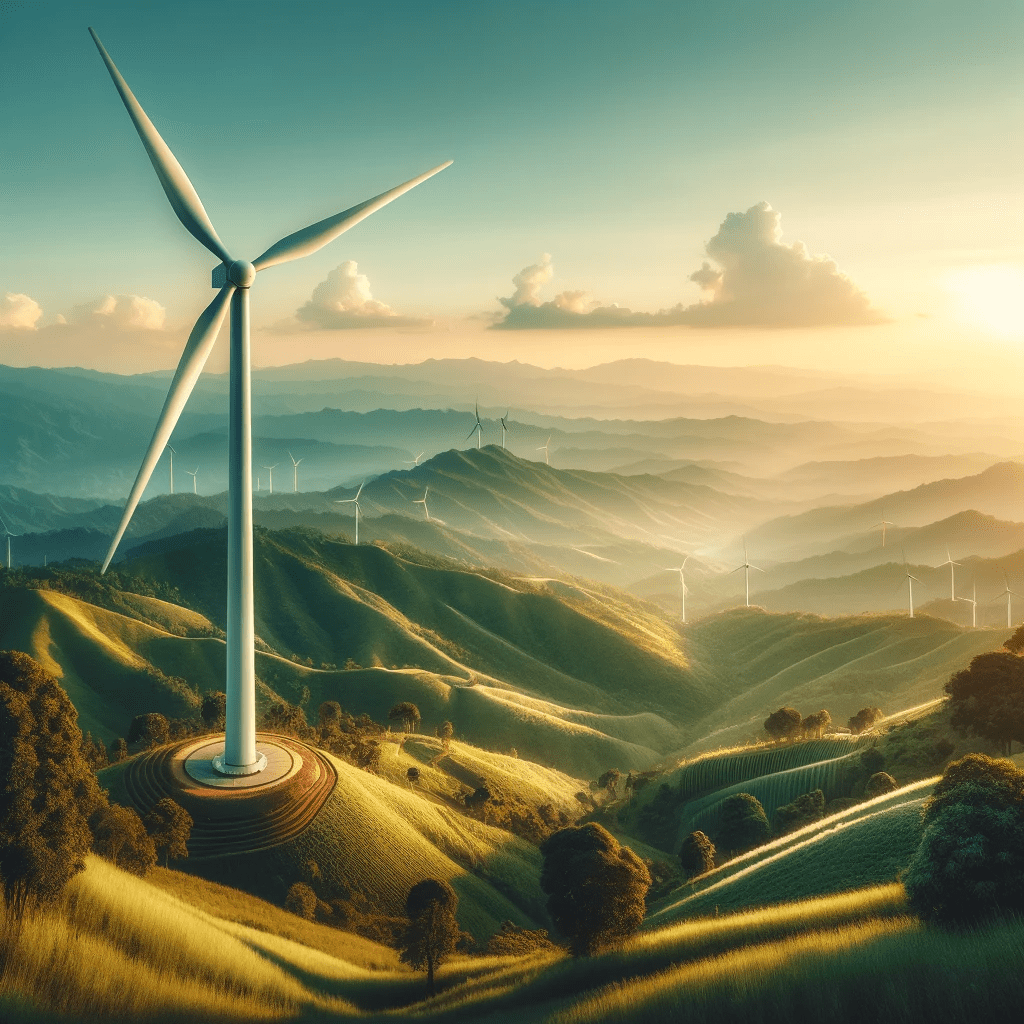
- What Are Wind Turbines? – Discover wind turbines’ basic structure and function. Learn how these innovative machines convert wind into electricity.
- Environmental Significance – Understand why wind turbines are crucial for those who are environmentally conscious and for the general public. We’ll explore their role in reducing carbon footprints and fostering sustainable living.
How Wind Turbines Work: The Process of Generating Electricity
Unravelling the mechanics of how wind turbines generate Electricity is critical to appreciating their value. This section breaks down the process into simple, digestible steps.
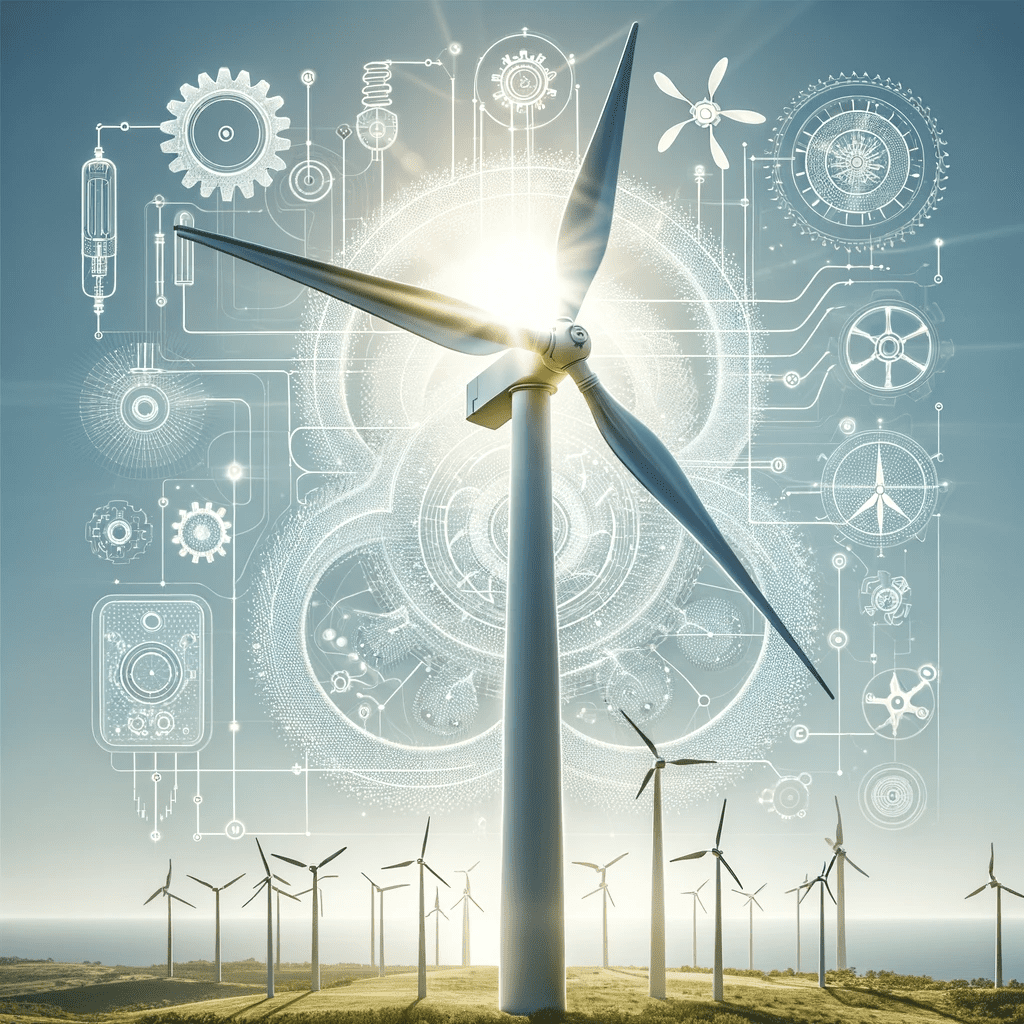
- Catching the Wind – Learn about the turbine’s blades and how they capture wind energy. We’ll explain the science behind their design and efficiency.
- Conversion to Electricity – Discover the journey from kinetic wind energy to usable electrical power. Understand the role of the generator and how it plays a pivotal part in this process.
- Distribution of Power – Find out how Electricity is transferred from the turbine to your home. We’ll discuss the grid system and its importance in energy distribution.
Environmental Impact of Wind Turbines
Delving deeper, this section highlights the positive environmental impacts of wind turbines, reinforcing their importance for eco-conscious individuals.
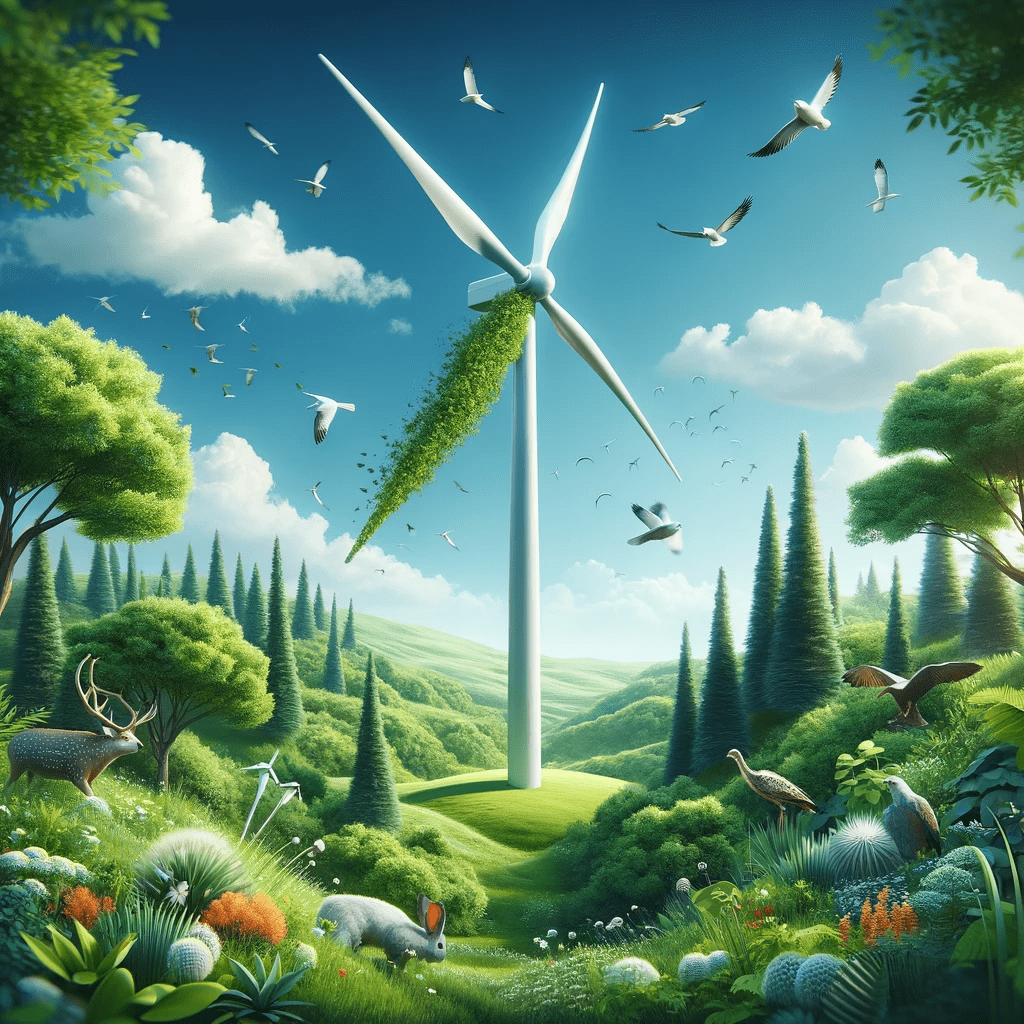
- Reduction in Greenhouse Gases – To comprehend the role of wind turbines in mitigating greenhouse gas emissions, as opposed to conventional energy sources. To understand the role of wind turbines in mitigating greenhouse gas emissions, as opposed to traditional energy sources.
- Sustainability and Renewable Energy – Explore how wind turbines offer a sustainable energy solution, providing a renewable source that doesn’t deplete over time.
- Wildlife and Ecosystem Conservation – Learn about the considerations and measures taken to ensure that wind turbines are wildlife-friendly and how they contribute to ecosystem conservation.
Conclusion: Embracing Wind Energy
In the concluding section, we’ll summarize the importance of wind turbines and their role in shaping a greener future.

- Future of Renewable Energy – Reflect on the potential of wind energy in the coming years and its significance in the global energy landscape.
- Call to Action for the Public – Encourage readers, especially those who are environmentally conscious, to support and advocate for wind energy initiatives.
The Mechanics of Wind Turbines
Unveiling the Components: Building Blocks of Wind Turbines
Wind turbines are more than just tall structures; they are engineering marvels. Let’s uncover the key components that allow them to harness wind energy.
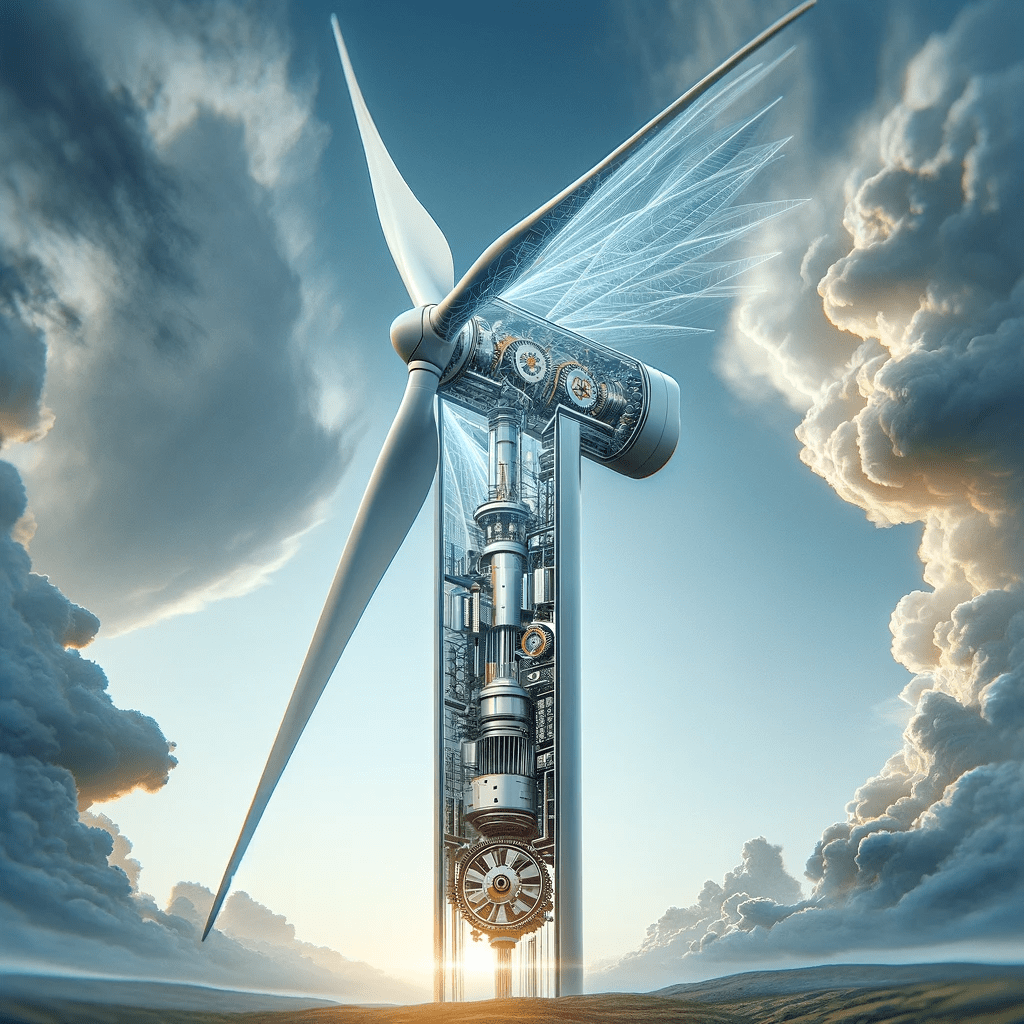
- Blades: These are the ‘arms’ of the turbine, capturing the wind’s kinetic energy. Typically, turbines have three blades designed for maximum efficiency.
- Rotor: This part connects the blades to the main shaft. It plays a crucial role in transferring wind energy to the generator.
- Nacelle: Sitting atop the tower, the nacelle houses the generator and other crucial equipment. It’s the brain of the turbine, where the magic of electricity generation happens.
How Wind Energy is Captured: A Journey from Breeze to Power
Understanding how turbines transform a simple breeze into Electricity is fascinating. This section breaks down this journey into understandable steps.
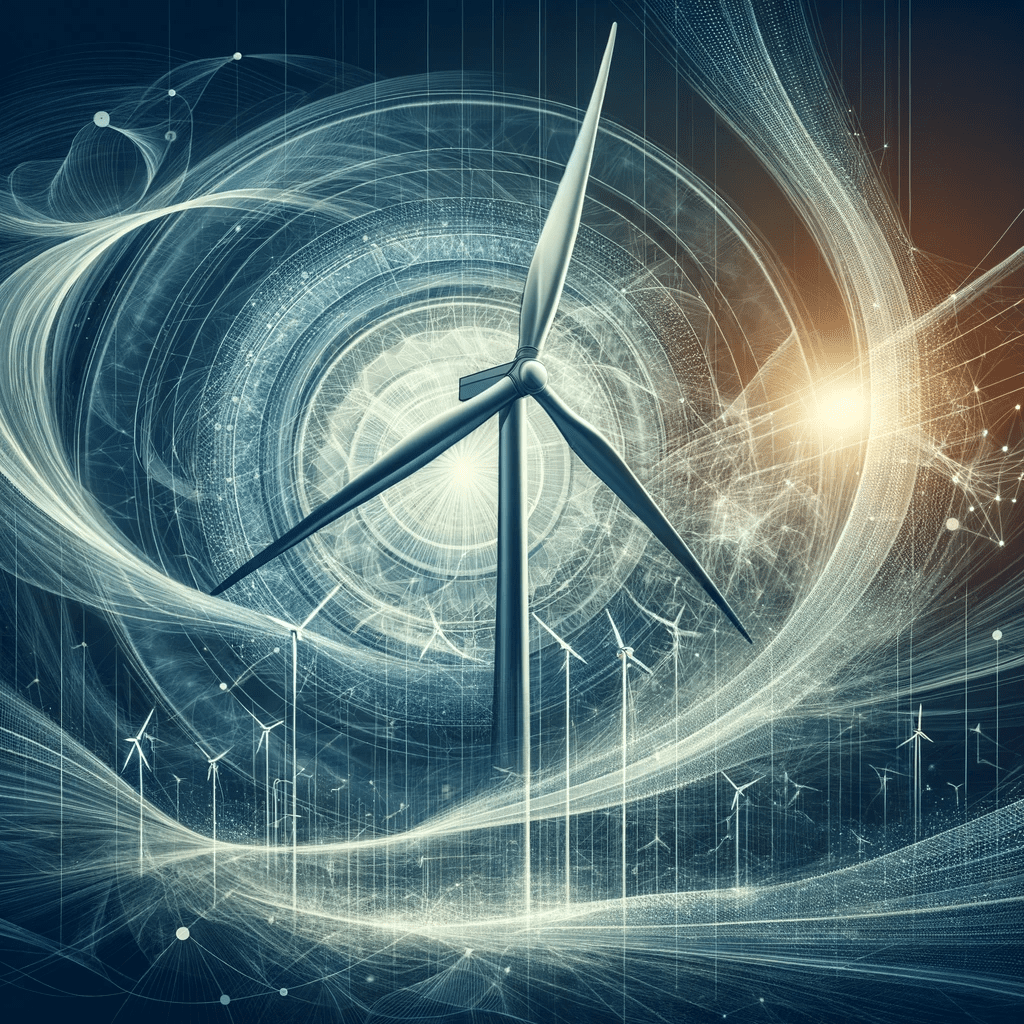
- Catching the Breeze: As wind hits the blades, they rotate, capturing energy. The design of the blades allows them to turn even in light winds.
- Rotational Energy: The rotation of the blades turns the rotor connected to the main shaft. This action converts wind energy into rotational energy.
- From Rotation to Electricity: The main shaft spins inside the nacelle, driving the generator. This is where rotational energy becomes electrical energy.
- Power Output: The Electricity generated is then sent down the tower to a transformer. Here, it’s converted to the correct voltage for the power grid.
The Process of Generating Electricity
Transforming Wind to Power: The Key Stages
Wind turbines are not just structures that stand tall against the sky; they are dynamic systems converting wind into Electricity. Let’s explore the critical phases of this conversion process.
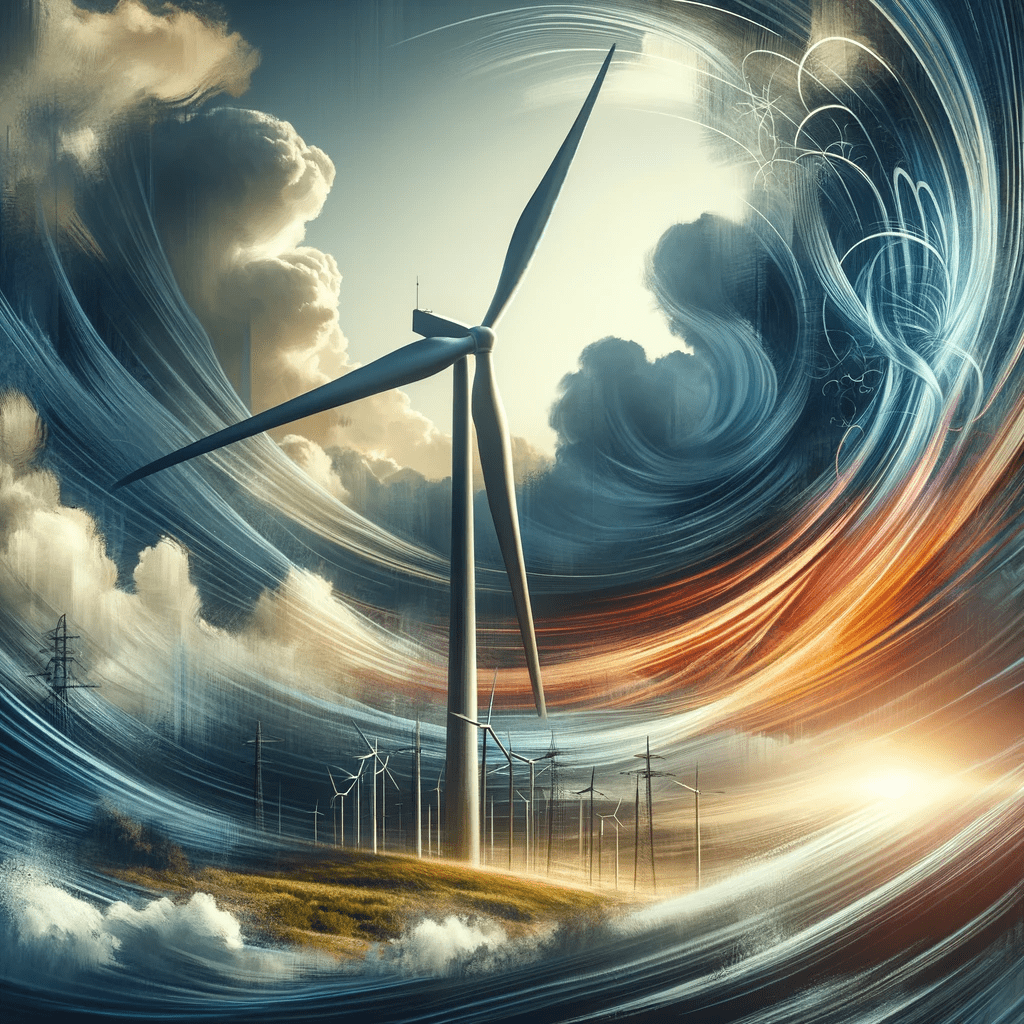
- Kinetic Energy to Mechanical Energy: First, the wind’s kinetic energy is harnessed. This energy, inherent in moving air, is captured by the turbine’s blades.
- Action of the Wind: When wind strikes the blades, it causes them to rotate, capturing the energy.
- Transfer to the Rotor: This rotation moves the rotor connected to the blades, initiating mechanical energy production.
- Mechanical Energy to Electrical Energy: The core of electricity generation lies in this transformation.
- From Rotor to Generator: The rotor’s movement drives the main shaft and spins the generator.
- Conversion Inside the Generator: This mechanical energy is converted into electrical energy, ready for use.
- Role of the Generator: The generator is the heart of the energy conversion process.
- Electromagnetic Induction: Utilizing electromagnetic principles, the generator transforms rotational energy into electrical power.
- Power Output Regulation: It also regulates the Electricity generated, ensuring consistent power output suitable for grid distribution.
Challenges and Efficiency
Navigating the Unpredictable: Wind Variability
Wind turbines harness natural wind, a source that’s only sometimes predictable or consistent. Let’s delve into how this variability impacts electricity generation.
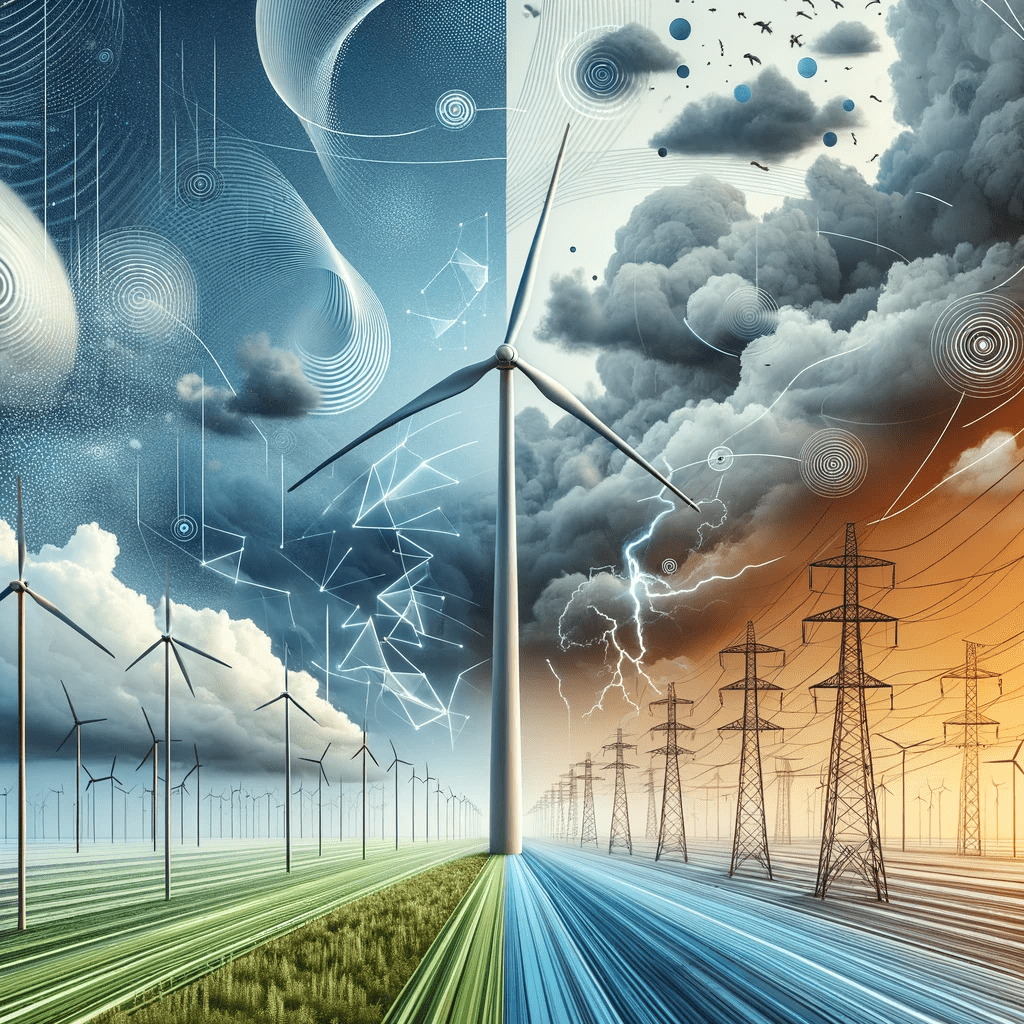
- Inconsistent Wind Speeds: Wind speeds can fluctuate, affecting how much Electricity a turbine can generate.
- Optimal Wind Conditions: Turbines require a minimum wind speed to start generating power and have a maximum limit for safety.
- Impact on Power Output: Variability in the wind can lead to fluctuations in power output, challenging consistent electricity supply.
Storing the Breeze: Energy Storage Solutions
Overcoming the challenge of wind’s inconsistency involves innovative energy storage solutions. These solutions help maintain a stable energy supply.
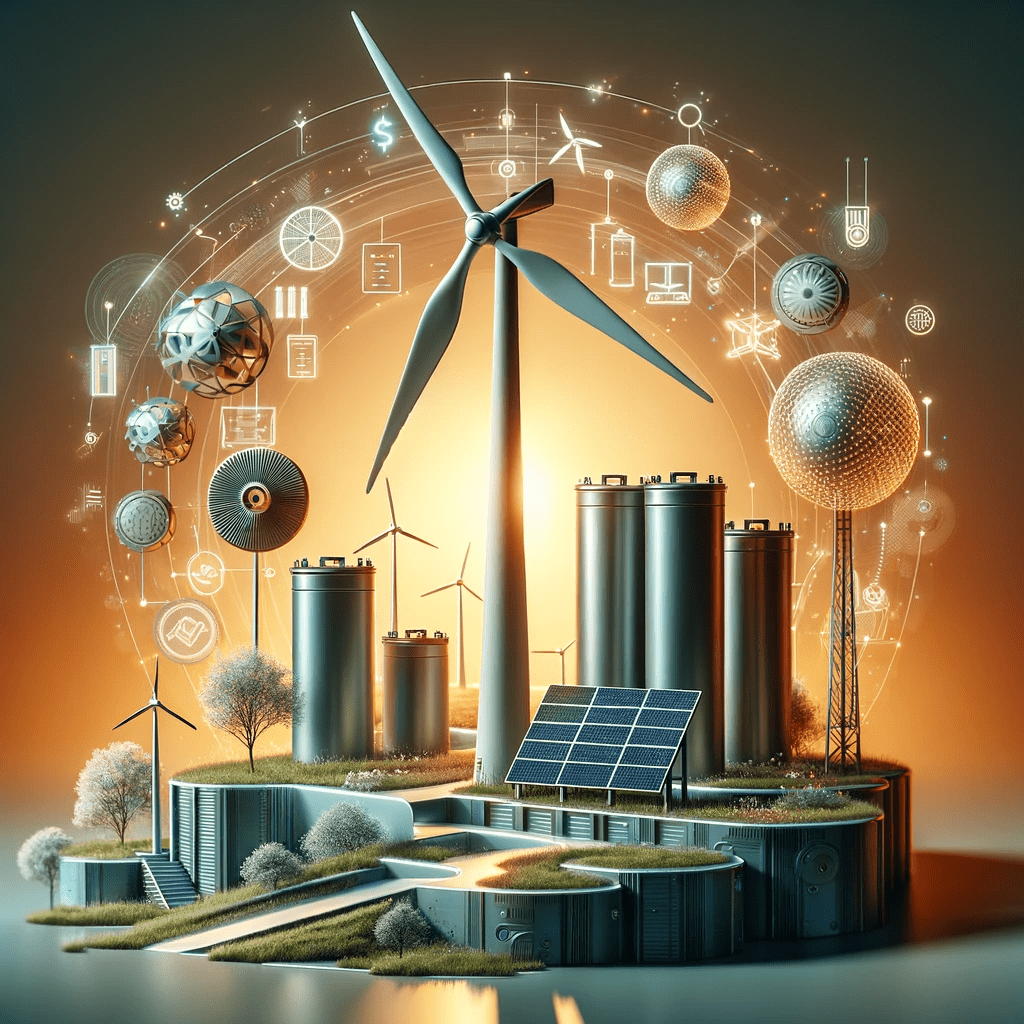
- Battery Storage Systems: Large-scale batteries can store excess energy generated during high winds.
- Smooth Power Supply: These systems release stored energy during low wind periods, ensuring a more constant power supply.
- Advancements in Technology: Continuous improvements in storage technology are making this solution more viable and efficient.
Environmental Impact
Towards a Greener Future: Reduced Carbon Footprint
Wind turbines significantly contribute to reducing the overall carbon footprint. Let’s explore how they achieve this crucial environmental goal.
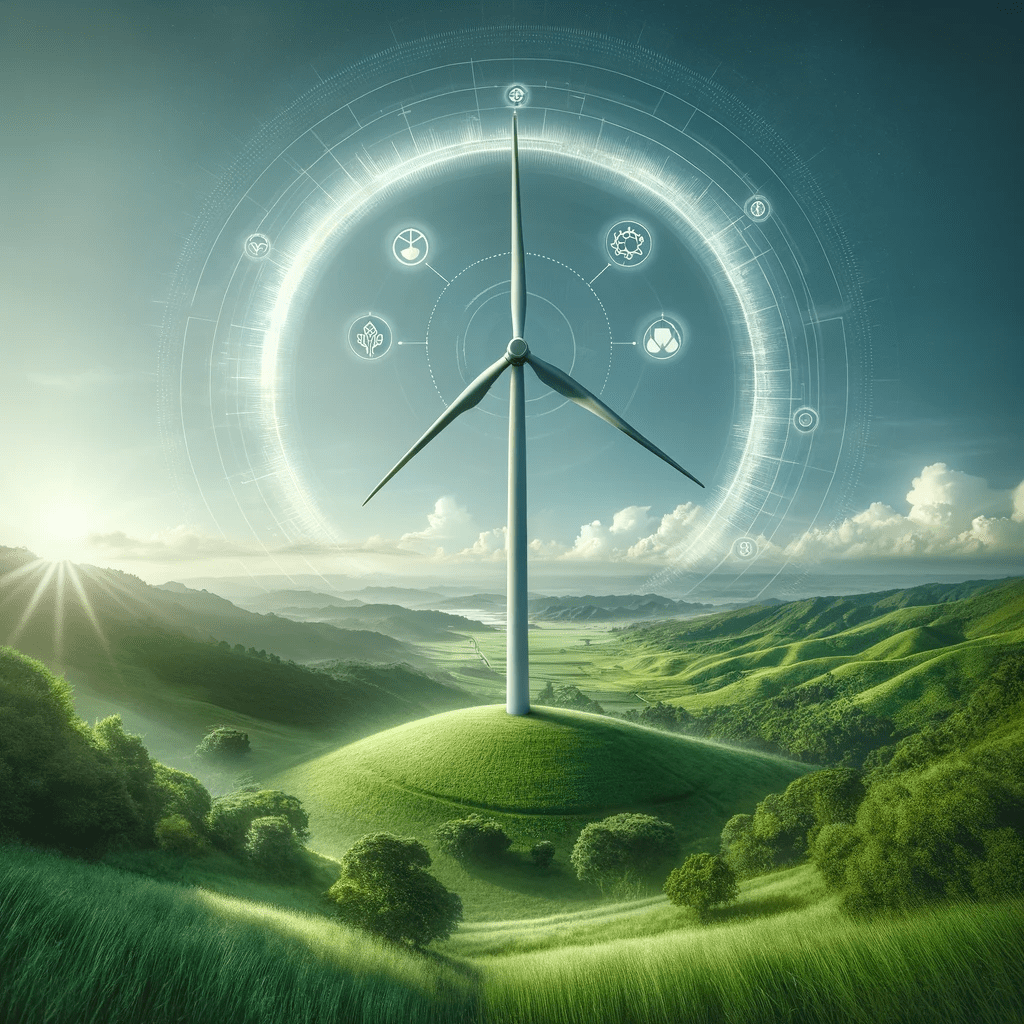
- Clean Energy Source: Unlike fossil fuels, wind turbines generate electricity without emitting greenhouse gases.
- Sustainable Alternative: This sustainable energy source replaces the need for carbon-intensive power generation.
- Long-term Environmental Benefits: Reduced carbon emissions contribute to combating climate change and its effects.
Coexisting with Nature: Wildlife and Habitat Considerations
While wind turbines benefit the environment, it’s vital to consider their impact on wildlife and habitats.
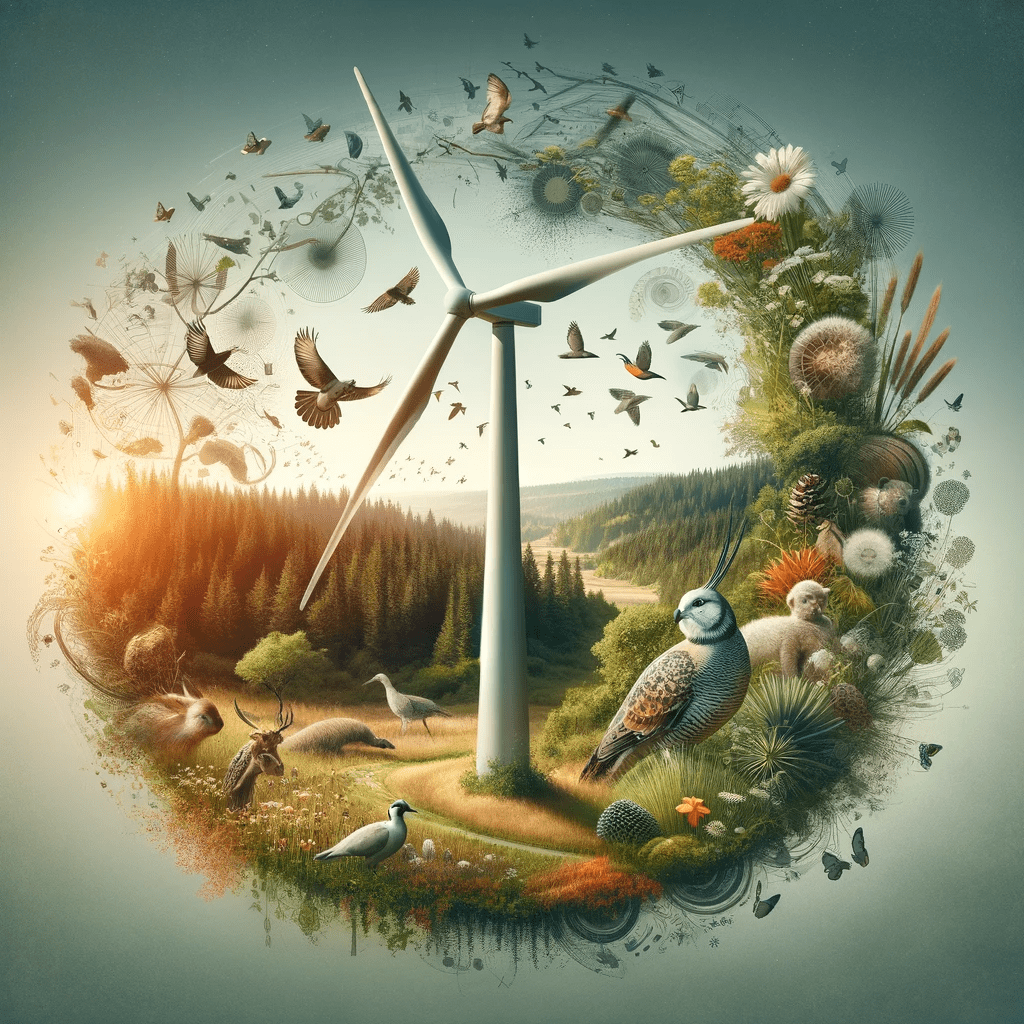
- Birds and Bats: Design and location strategies are implemented to minimize the impact on these creatures.
- Habitat Preservation: Careful planning ensures turbines are placed in areas with minimal disruption to local ecosystems.
- Ongoing Research and Adaptation: Continual studies and technological advancements help reduce negative impacts on wildlife.
Economic Benefits
Powering Communities: Job Creation
Wind turbines are not just about generating Electricity; they’re also powerful drivers of economic growth, particularly in job creation.
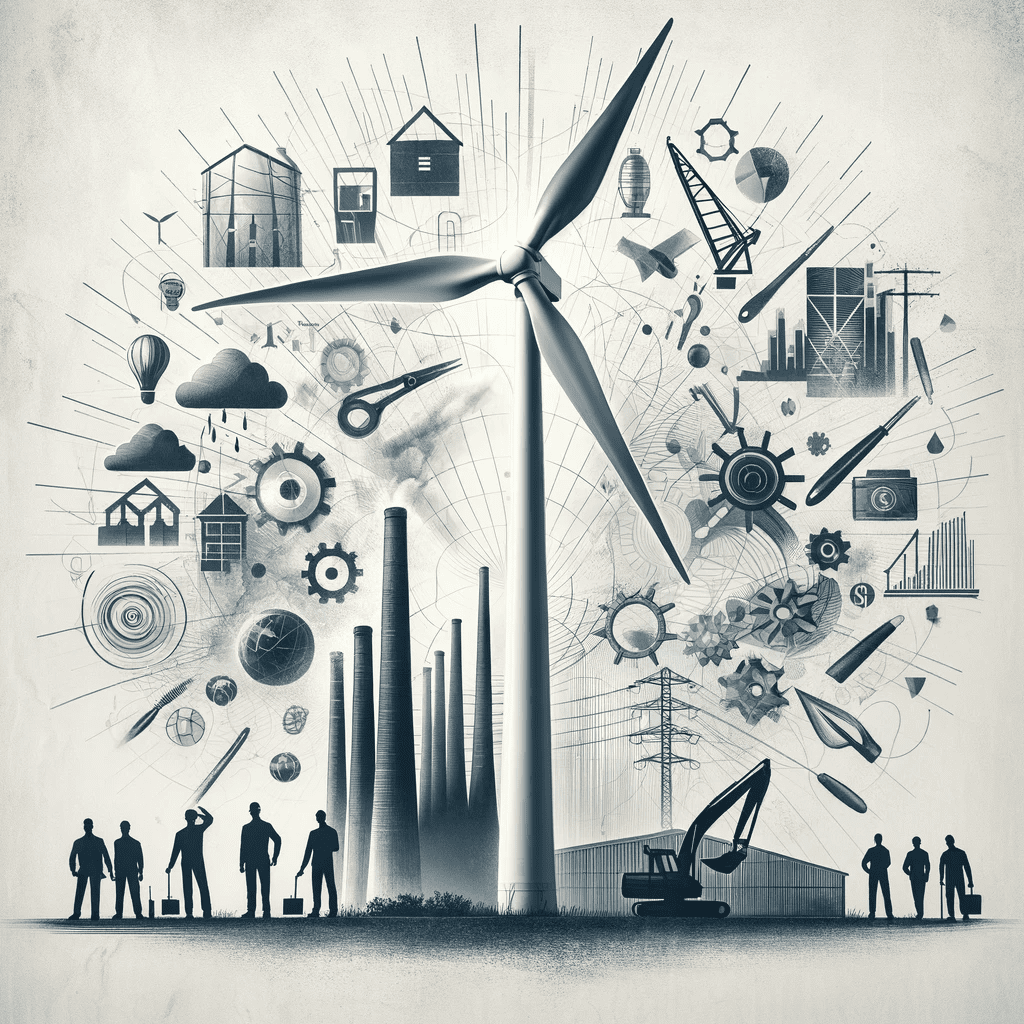
- Manufacturing and Installation: The production and setup of wind turbines create numerous jobs in these sectors.
- Skilled and Unskilled Labor: This industry requires a diverse workforce, offering both skilled and unskilled workers opportunities.
- Ongoing Maintenance: Long-term jobs are created in the maintenance and operation of wind turbines.
Sustainability Meets Savings: Long-term Cost Savings
The economic advantages of wind turbines extend beyond job creation, offering significant long-term cost savings.
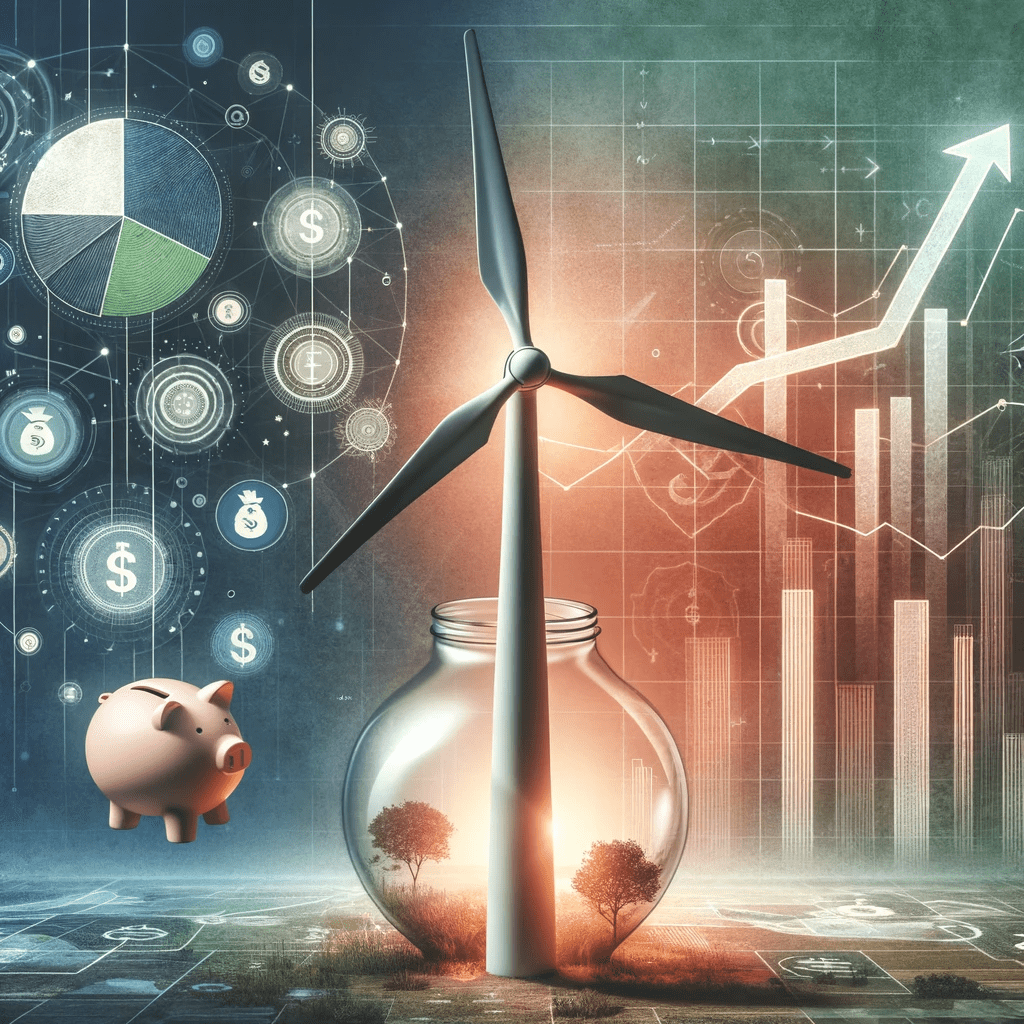
- Reduction in Energy Costs: Wind turbines provide a cost-effective power source once installed.
- Minimal Operational Expenses: Low operational and maintenance costs prove more economical over time.
- Stability in Energy Prices: Wind energy can help stabilize energy prices, reducing dependence on fluctuating fossil fuel markets.
Homebrew Wind Power: A Hands-On Guide to Harnessing the Wind
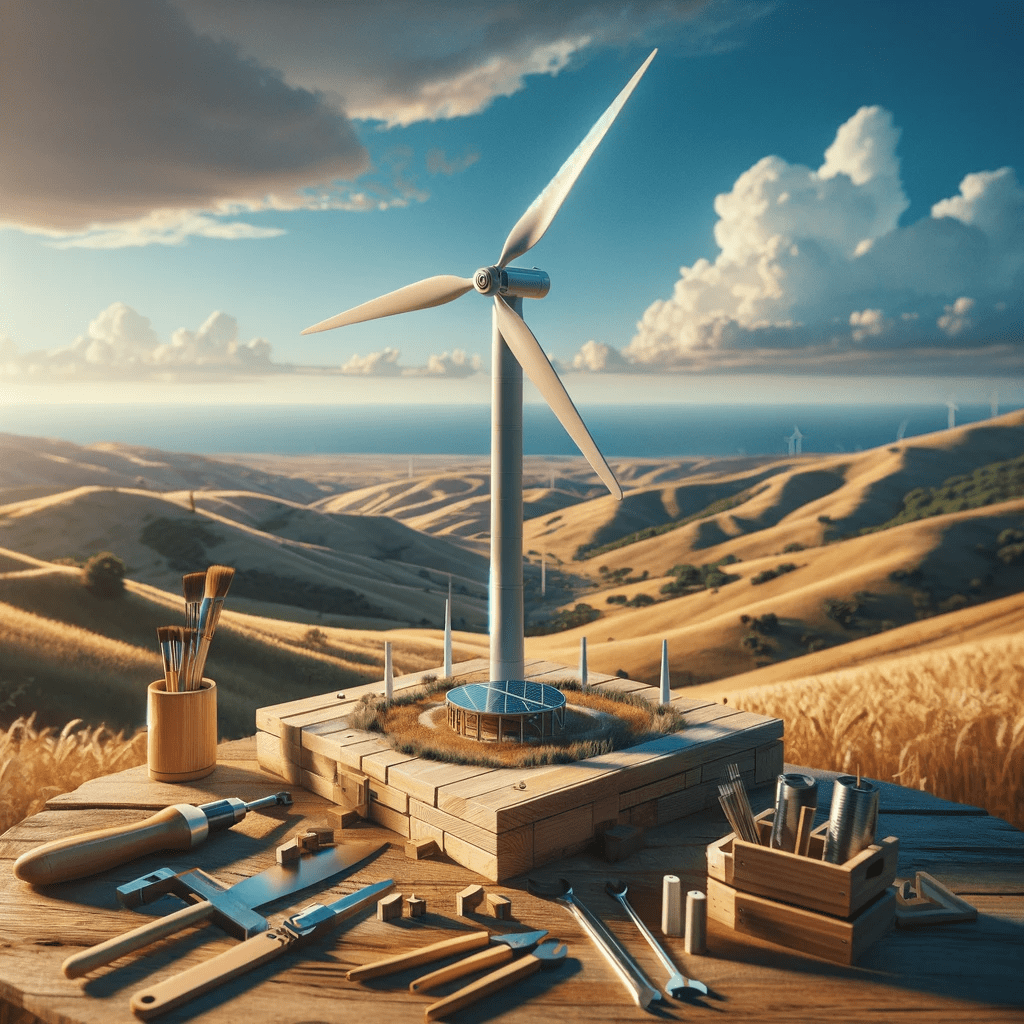
An Insightful Read: Description of the Book
“Homebrew Wind Power” is a comprehensive guide illuminating the world of wind-generated Electricity. Let’s explore what makes this book a must-read.
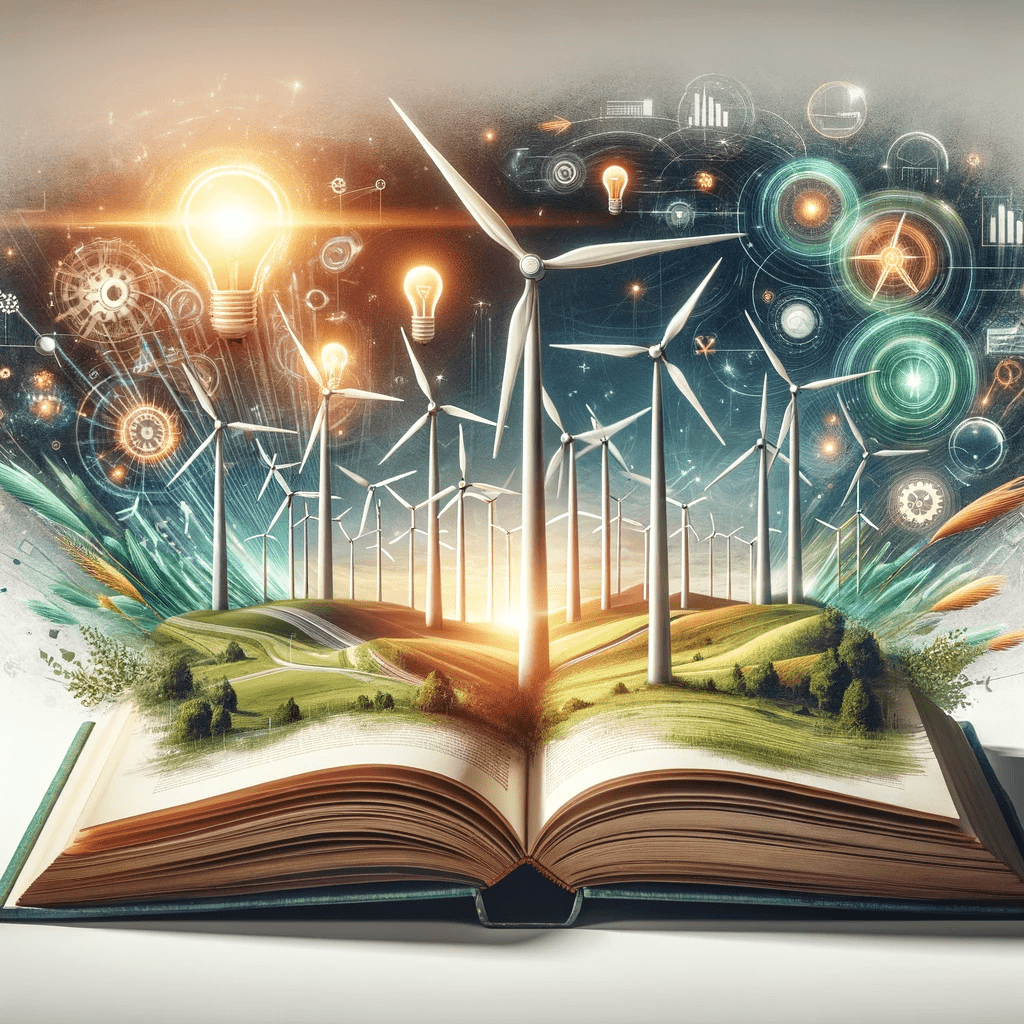
- Comprehensive Coverage: This book covers everything from wind power basics to advanced turbine design and installation.
- Step-by-Step Instructions: It provides detailed, easy-to-follow instructions for building and maintaining your own wind turbine.
- Rich in Illustrations and Diagrams: The guide is enhanced with illustrations and diagrams, making complex concepts accessible to all.
Directly Linked: Relevance to the Topic
With this book’s insights, understanding how a wind turbine generates Electricity becomes more meaningful.
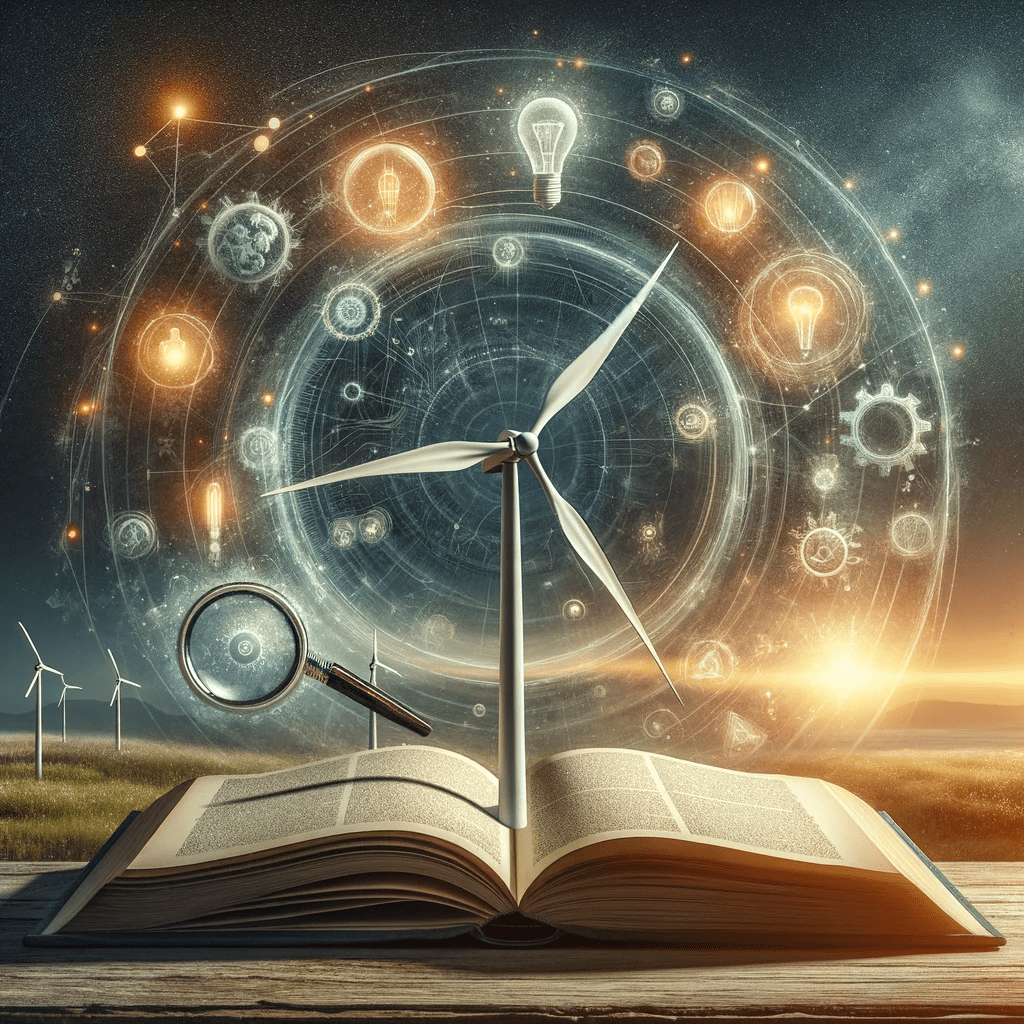
- Practical Application: It offers hands-on knowledge and bridges the gap between theory and practice.
- Enhances Understanding: The book deepens the reader’s understanding of wind power mechanics and its practical aspects.
- Up-to-date Information: “Homebrew Wind Power” stays current with the latest advancements in wind technology.
Empowering Knowledge: Why It’s a Valuable Asset
This guide is more than just a book; it’s an empowering tool for anyone interested in renewable energy.
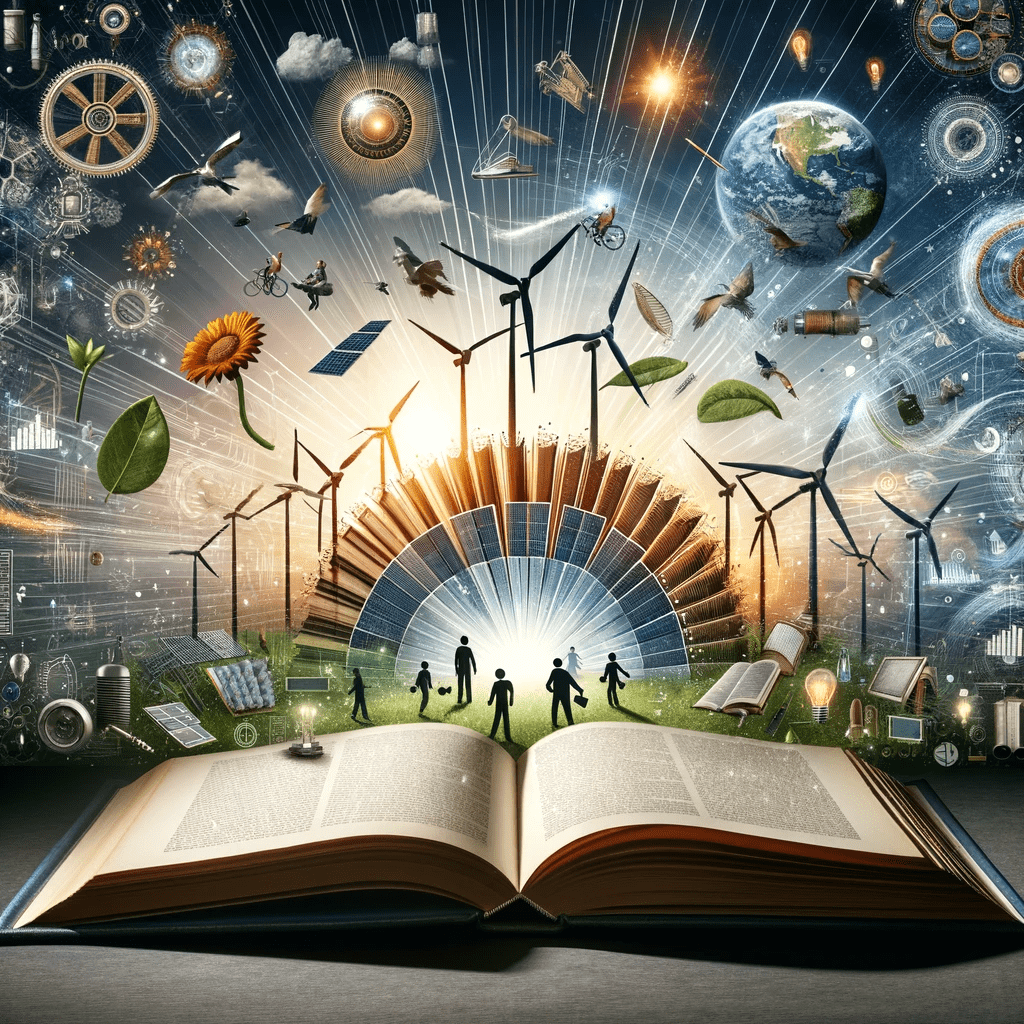
- Self-Sufficiency: It encourages self-sufficiency in energy production, a vital skill in today’s world.
- Encourages Sustainable Practices: The book promotes environmental stewardship, aligning with the interests of environmentally-conscious individuals.
- Broad Audience Appeal: Whether you’re a hobbyist, student, or environmental enthusiast, this book offers valuable insights for a diverse audience.
Conclusion
Embracing Tomorrow: Future of Wind Energy
As we conclude our exploration of how wind turbines generate Electricity, let’s look at the future of wind energy.
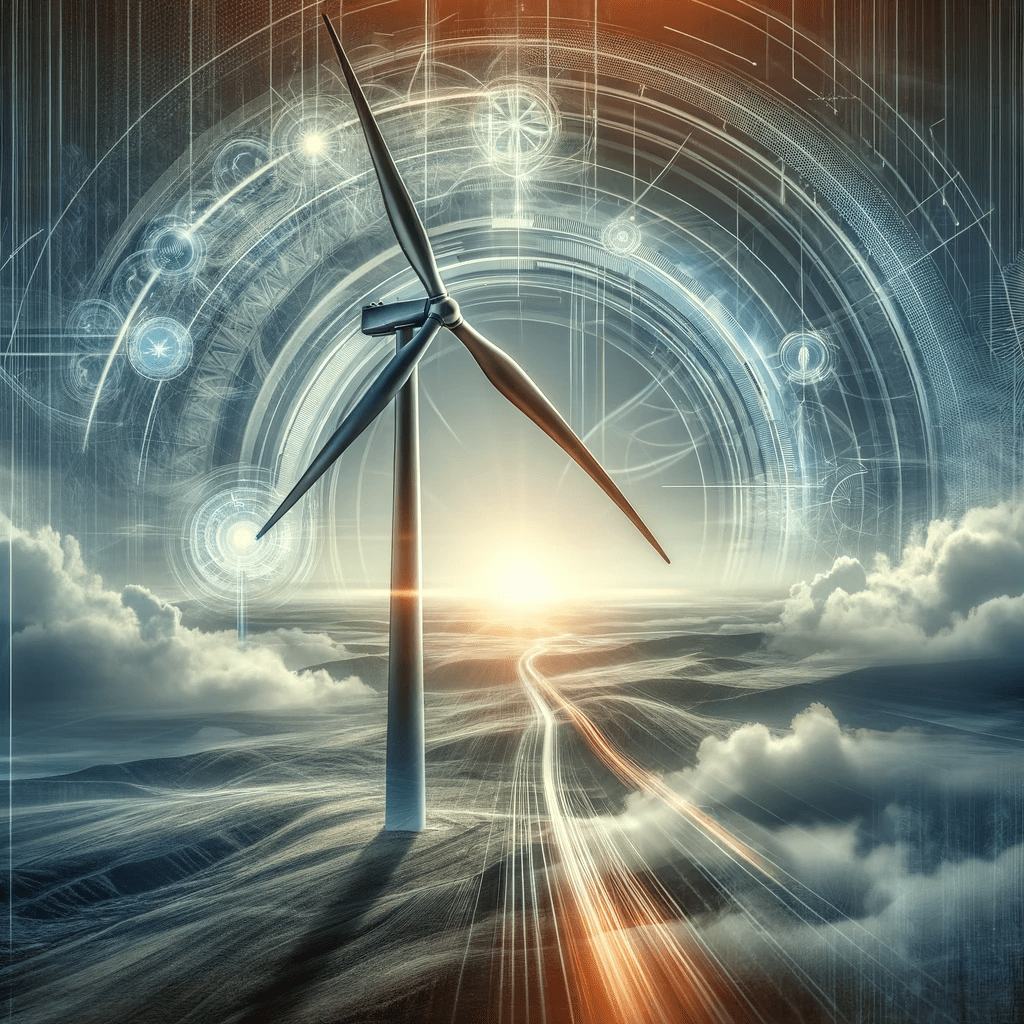
- Continuous Innovation: Technological advancements make wind energy more efficient and accessible.
- Increasing Global Adoption: Countries worldwide are increasingly turning to wind power to meet their energy needs sustainably.
- Environmental and Economic Impact: The ongoing shift to wind energy promises significant environmental and economic benefits.
A Call to Action: Encouragement for Further Learning and Exploration
Our journey doesn’t end here; it’s just the beginning of a deeper understanding and involvement in renewable energy.
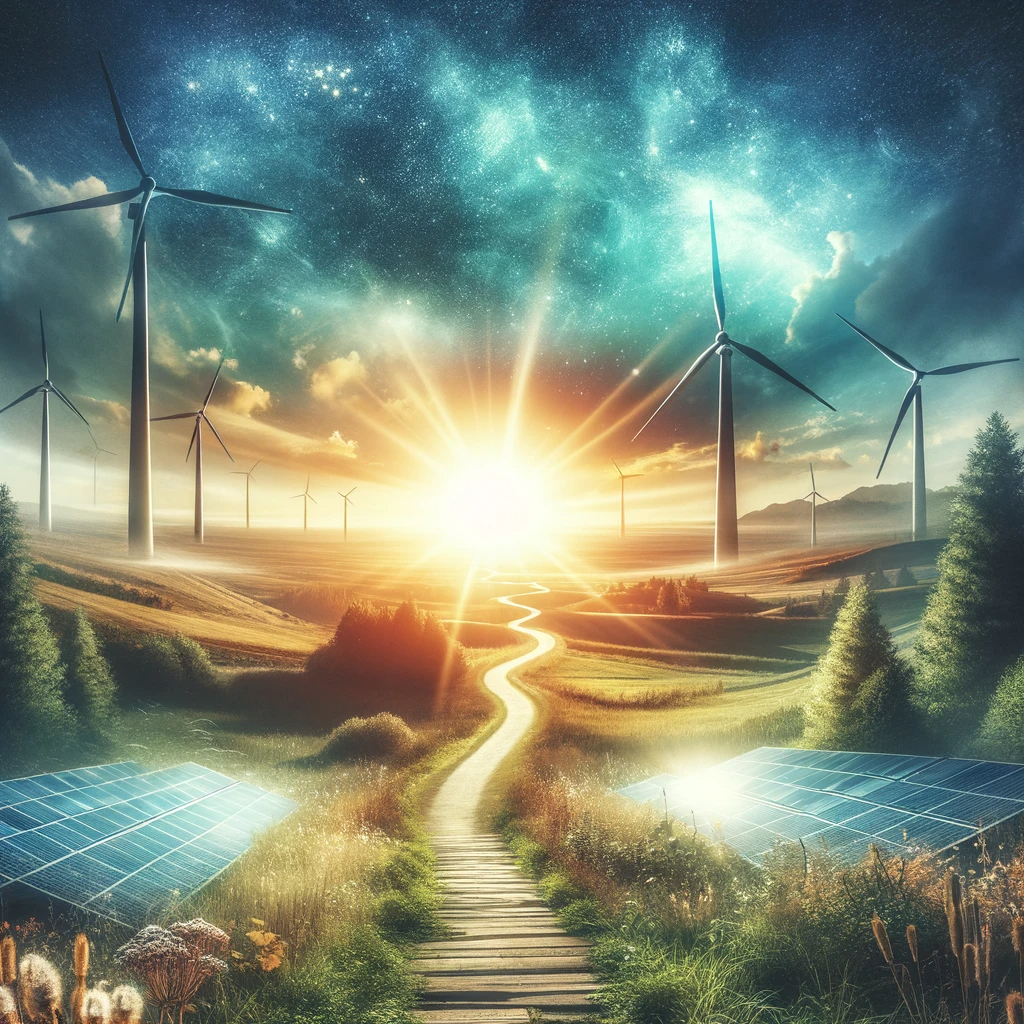
- Stay Informed: Keep up-to-date with the latest wind energy and renewable technologies developments.
- Get Involved: Whether it’s through community projects or personal initiatives, actively participating can make a difference.
- Spread Awareness: Share knowledge about wind energy with others, fostering a more sustainable and informed community.
Other Articles
We appreciate you diving into “How Does a Wind Turbine Generate Electricity?” and exploring this fascinating topic with us. If you found it enlightening, please consider sharing it with others who might also be interested in renewable energy.
While you’re here, we invite you to check out more insightful articles on sunnydaysgo.com:
- Wind Energy Pros and Cons: The Definitive Analysis: Delve into an in-depth exploration of the advantages and challenges of wind energy.
- Advantages of Renewable Energy over Non-Renewable Energy: Understand the benefits of renewable sources compared to traditional energy forms.
- Photovoltaic Effect And Its Popular Benefits: Discover how the photovoltaic effect is transforming the solar energy landscape.
- Understanding Your Human Energy Body: A Comprehensive Introduction: Explore the concept of human energy and its impact on overall wellness.
- Glossary Term: Wellness: Dive into our glossary for a deeper understanding of wellness and its significance in our lives.
Each of these articles offers unique insights into the world of energy and wellness, expanding your knowledge and understanding. Happy reading!
